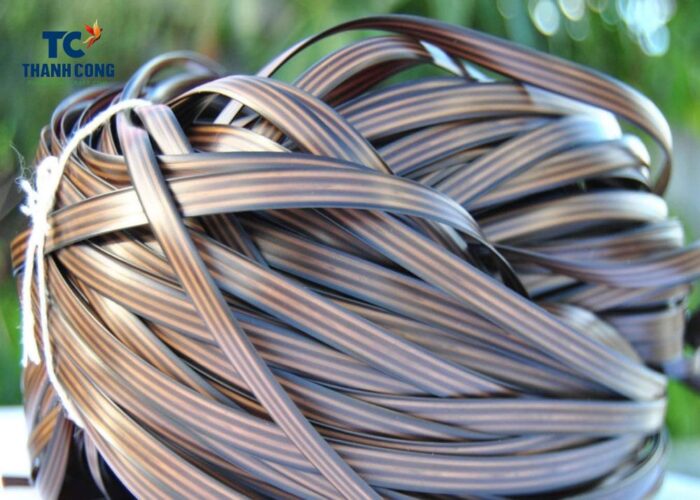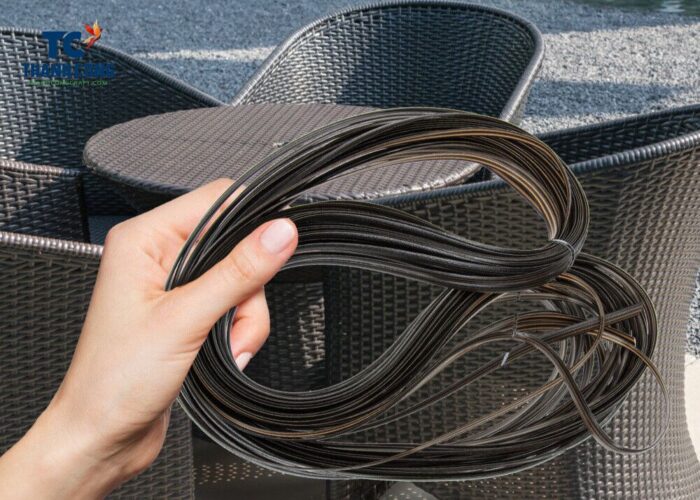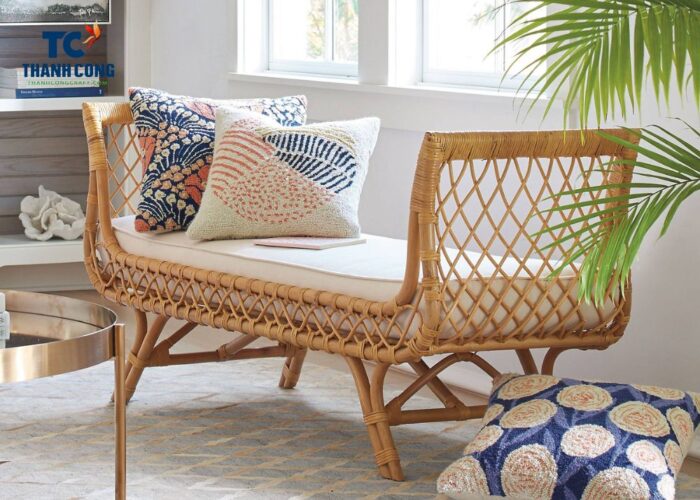What is synthetic rattan, and is it superior to their natural counterparts? These questions have gained prominence as the search for durable, stylish, and eco-friendly outdoor furniture intensifies. Synthetic rattan has emerged as a compelling alternative, offering a range of benefits.
In this exploration, we will delve into the origins, characteristics, and advantages of synthetic rattan while comparing it to natural rattan. By the end of this discussion, you’ll have a clearer understanding of whether synthetic rattan is the right choice for your outdoor living needs.
Contents [hide]
1. What is synthetic rattan?
Synthetic rattan is made from composed of polyethylene, a type of plastic. It is engineered to mimic the appearance of natural rattan or wicker and is commonly used in the construction of outdoor furniture and accessories. This material is renowned for its resistance to various environmental factors, making it an ideal choice for outdoor use.

Synthetic rattan is crafted from lightweight and flexible plastic, typically woven into different forms to create various objects. It can be colored before or after the manufacturing process, allowing for a wide range of design possibilities.
One of its notable advantages is its flexibility, which makes it less prone to breakage during the weaving process. It also possesses excellent resistance to the elements, withstanding years of exposure without rotting or sustaining damage. Synthetic rattan’s durability and weatherproof properties make it an excellent option for crafting outdoor furniture. Furthermore, this material resists fading when subjected to prolonged direct sunlight and tends to remain free from drying out or cracking, which is a common issue with traditional wicker.
2. The benefits of synthetic rattan?
Synthetic rattan offers a range of advantages over both natural rattan and other furniture materials. These benefits are not listed in any particular order, so let’s explore each of them:
- Longevity: Investing in synthetic rattan furniture is a wise choice due to its extended lifespan compared to authentic rattan. It retains its appearance and durability over time.
- Weatherproof and Weather-Resistant: Synthetic rattan is specifically designed to be UV-resistant and waterproof, a feature lacking in natural rattan. Its weatherproof qualities make it resilient when exposed to outdoor elements during spring and summer, although some care is still recommended.
- Strength: Synthetic rattan furniture exhibits greater resistance to wear and tear, making it less susceptible to weakening during regular use. While natural rattan may start strong, it tends to deteriorate quickly with outdoor exposure, resulting in reduced strength. Synthetic rattan, on the other hand, maintains its strength for a longer duration.
- Lightweight: Despite its increased strength, synthetic rattan furniture is notably lightweight. This characteristic makes it easy to move around, whether you’re rearranging your garden layout or simply relocating it on your patio. The lightweight nature is especially advantageous when dealing with separate chairs, benches, and tables in furniture sets, allowing you to create your desired seating or dining arrangements effortlessly.

- Cost-Effective: Synthetic rattan is often more affordable than natural rattan. Considering the added advantages of strength and durability, it offers excellent value for money. If you’re on a budget, synthetic rattan allows you to design an impressive outdoor space without straining your finances.
- Low Maintenance: Unlike traditional rattan, which requires periodic maintenance to prevent drying and damage, synthetic rattan is relatively low-maintenance. While it’s essential to avoid damage, it demands far less upkeep, making it a practical and hassle-free choice for outdoor furniture. These advantages collectively make synthetic rattan an attractive and practical option for outdoor furniture.
3. What is the difference between natural rattan and synthetic rattan?
Natural rattan is made of organic, quality fibers found in nature, while artificial materials like plastic and resin are used to make synthetic rattan furniture.
- Natural rattan is extremely durable and will last for a long time. Synthetic rattan can be easier to break or damage.
- Depending on the tightness of the weave, natural rattan furniture is generally softer and more comfortable than synthetic rattan that has an extra hardened coating.
- Natural rattan is more suitable indoors, unless specifically prepared to withstand the elements. Synthetic rattan furniture can be placed outdoors all year long.
- Natural rattan has that unexplainable visual appeal and feel of the weave that can’t be replicated in synthetic furniture.
4. Are synthetic rattan better than natural rattan?
The comparison between natural rattan and synthetic rattan depends on specific factors, including your preferences and intended use. Although Synthetic rattan has many advantages, it also comes with some disadvantages:
- Lack of Natural Feel: Synthetic rattan lacks the natural charm and appeal of natural rattan. It may not provide the warm and natural feel of the original material.
- Lack of Natural Decomposition: While synthetic rattan can be more durable, it does not naturally decompose like natural rattan. When no longer in use, it can have a greater environmental impact.

- Environmental Drawbacks: The production of synthetic rattan often requires the use of chemical resources and energy. It may not be considered an environmentally friendly choice compared to natural rattan.
- High Temperatures: In high-temperature conditions, synthetic rattan can become soft and deformable. This can occur if it is exposed to high temperatures and prolonged sunlight.
- Low Salvage Value: When it’s no longer needed, synthetic rattan typically has a lower salvage value compared to other natural materials.
In summary, the choice between natural and synthetic rattan depends on your priorities. If you value the authentic look and eco-friendliness, natural rattan may be your preference. However, if durability, low maintenance, and design flexibility are more important, synthetic rattan might be the better choice, especially for outdoor furniture. Ultimately, the decision should align with your specific needs and preferences.
If you have any further questions, don’t hesitate to send thanhcongcraft an email us at info@thanhcongcraft.com or message us at WhatsApp: +84967485411. Hope to serve you soon! Best regard!


